| 첨부 '1' |
|---|
| author | Chang Seop Hong |
|---|---|
| journal | Journal of the American Chemical Society |
| Homepage | https://www.immlab.korea.ac.kr/ |
Ammonia is a promising energy vector that can store the high energy density of hydrogen. For this reason, numerous adsorbents have been investigated as ammonia storage materials, but ammonia adsorbents with a high gravimetric/volumetric ammonia capacity that can be simultaneously regenerated in an energy-efficient manner remain underdeveloped, which hampers their practical implementation. Herein, we report Ni_acryl_TMA (TMA = thiomallic acid), an acidic group-functionalized metal-organic framework prepared via successive post-synthetic modifications of mesoporous Ni2Cl2BTDD (BTDD = bis(1H-1,2,3,-triazolo [4,5-b],-[4',5'-i]) dibenzo[1,4]dioxin). By virtue of the densely located acid groups, Ni_acryl_TMA exhibited a top-tier gravimetric ammonia capacity of 23.5 mmol g-1 and the highest ammonia storage of 0.39 g cm-3 at 1 bar and 298 K. The structural integrity and ammonia storage capacity of Ni_acryl_TMA were maintained after ammonia adsorption-desorption tests over five cycles. Temperature-programmed desorption analysis revealed that the moderate strength of the interaction between the functional groups and ammonia significantly reduced the desorption temperature compared to that of the pristine framework with open metal sites. The structures of the post-synthetic modified analogs were elucidated based on Pawley/Rietveld refinement of the synchrotron powder X-ray diffraction patterns and van der Waals (vdW)-corrected density functional theory (DFT) calculations. Furthermore, the ammonia adsorption mechanism was investigated via in-situ infrared and vdW-corrected DFT calculations, revealing an atypical guest-induced binding mode transformation of the integrated carboxylate. Dynamic breakthrough tests showed that Ni_acryl_TMA can selectively capture traces of ammonia under both dry and wet conditions (80% relative humidity). These results demonstrate that Ni_acryl_TMA is a superior ammonia storage/capture material.
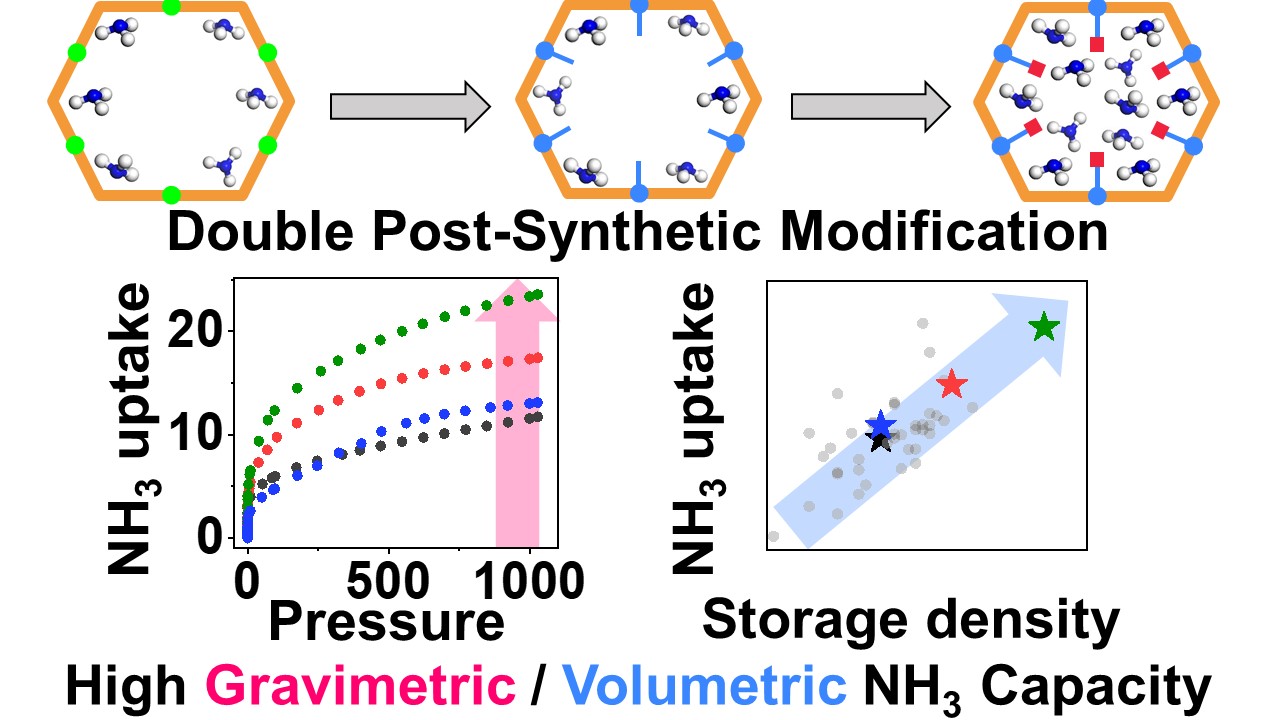
DOI: https://doi.org/10.1021/jacs.2c01117
-
Read More
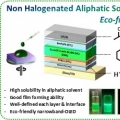
Eco-friendly solution-processed narrowband OLEDs using non-halogenated aliphatic solvent systems
In general, fabricating multilayer structures in solution-processed organic light-emitting diodes (OLEDs) presents challenges owing to the potential degradation of the initial film during subsequent processing steps. Furthermore, these devi... -
Read More
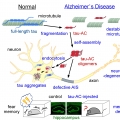
Self-Aggregating Tau Fragments Recapitulate Pathologic Phenotypes and Neurotoxicity of Alzheimer's Disease in Mice
In tauopathy conditions, such as Alzheimer's disease (AD), highly soluble and natively unfolded tau polymerizes into an insoluble filament; however, the mechanistic details of this process remain unclear. In the brains of AD patients, o... -
Read More
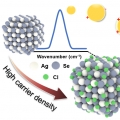
Ultranarrow Mid-infrared Quantum Plasmon Resonance of Self-doped Silver Selenide Nanocrystal
The infrared quantum plasmon resonance (IR QPR) of nanocrystals (NCs) exhibits the combined properties of classical and quantum mechanics, potentially enabling unprecedented optics. However, research on the development of localized surface ... -
Read More
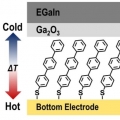
Molecular Thermoelectricity in EGaIn-Based Molecular Junctions
Understanding the thermoelectric effects that convert energy between heat and electricity on a molecular scale is of great interest to the nanoscience community. As electronic devices continue to be miniaturized to nanometer scales, thermor... -
Read More
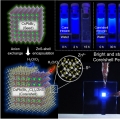
Perovskite Nanocrystals Protected by Hermetically Sealing for Highly Bright and Stable Deep-Blue Light-Emitting Diodes
Metal–halide perovskite nanocrystals (NCs) have emerged as suitablelight-emitting materials for light-emitting diodes (LEDs) and other practicalapplications. However, LEDs with perovskite NCs undergoenvironment-induced and ion-migratio... -
Read More
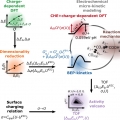
The importance of a charge transfer descriptor for screening potential CO2 reduction electrocatalysts
It has been over twenty years since the linear scaling of reaction intermediate adsorption energies started to coin the fields of heterogeneous and electrocatalysis as a blessing and a curse at the same time. It has established the possibili... -
Read More
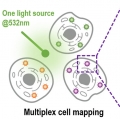
Resonant Raman-Active Polymer Dot Barcodes for Multiplex Cell Mapping
Resonance Raman spectroscopy is an efficient tool for multiplex imaging because of the narrow bandwidth of the electronically enhanced vibrational signals. However, Raman signals are often overwhelmed by concurrent fluorescence. In this stud... -
Read More

Decoding the Roles of Amyloid-β (1-42)'s Key Oligomerization Domains toward Designing Epitope-Specific Aggregation Inhibitors
Fibrillar amyloid aggregates are the pathological hallmarks of multiple neurodegenerative diseases. The amyloid-β (1-42) protein, in particular, is a major component of senile plaques in the brains of patients with Alzheimer’s di... -
Read More
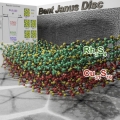
Flattening bent Janus nanodiscs expands lattice parameters
Nanoscale lattice parameter engineering is a potentially powerful tool for tailoring the electronic properties of nanomaterials. The nascent strain in juxtaposed hetero-interfaces of nanocrystals was recently shown to substantially affect t... -
Read More
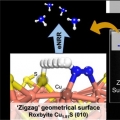
Directing the surface atomic geometry on copper sulfide for enhanced electrochemical nitrogen reduction
Understanding catalytic-conversion determinants will blueprint an efficient electrocatalyst design for electrochemical nitrogen reduction. In metal chalcogenide-based catalysts, metal-site nitrogen adsorption initiates nitrogen fixation, an... -
Read More
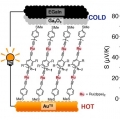
High Seebeck Coefficient Achieved by Multinuclear Organometallic Molecular Junctions
This paper describes thermoelectric property of molecular junctions incorporating multinuclear ruthenium alkynyl complexes that comprise Ru(dppe)2 (dppe = 1,2-bis(diphenylphosphino)ethane) fragments and diethylnyl aromatic bridging ligands ... -
Read More
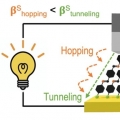
Thermopower in Transition from Tunneling to Hopping
The Seebeck effect of molecular junction in a hopping regime or tunneling-to-hopping transition remains uncertain. This paper describes the Seebeck effect in molecular epitaxy films (OPIn where n = 1 – 9) based on imine condensation b... -
Read More
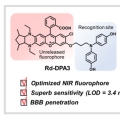
An Activity-Based Fluorescent Probe for Imaging Fluctuations of Peroxynitrite (ONOO-) in the Alzheimer's Disease Brain
Peroxynitrite (ONOO-) plays a critical role in Alzheimer's disease (AD), and the association between ONOO- and AD is inexplicit. To reveal the ONOO- influxes in AD brains, an activatable activity-based fluorescence probe Rd-DPA3 was rat... -
Read More

Deep learning for development of organic optoelectronic devices: Efficient prescreening of hosts and emitters in deep-blue fluorescent OLEDs
The highest occupied molecular orbital (HOMO) and lowest unoccupied molecular orbital (LUMO) energies, which are key factors in optoelectronic devices, must be accurately estimated for newly designed materials. Here, we developed a deep lea... -
Read More
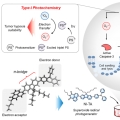
Photocatalytic Superoxide Radical Generator that Induces Pyroptosis in Cancer Cells
In this study, we show that a photocatalytic superoxide radical (O2−•) generator, NI-TA, triggers pyroptosis in cancer cells. NI-TA was designed to take advantage of an intramolecular triplet-ground state splitting energy modulat... -
Read More
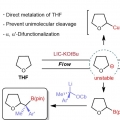
Direct C–H metallation of tetrahydrofuran and application in flow
The direct C–H metallation of tetrahydrofuran (THF) to generate α-anionic THF is one of the most straightforward methods for the the generation and utilization of α-anionic THF. Here we develop a reaction for the direct me... -
Read More
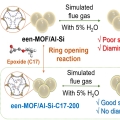
Functionalization of Diamine-Appended MOF-Based Adsorbents by Ring Opening of Epoxide: Long-Term Stability and CO2 Recyclability under Humid Conditions
Although diamine-appended metal-organic framework (MOF) adsorbents exhibit excellent CO2 adsorption performance, a continuous decrease in long-term capacity during repeated wet cycles remains a formidable challenge for practical application... -
Read More
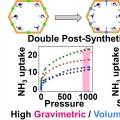
High Gravimetric and Volumetric Ammonia Capacities in Robust Metal–Organic Frameworks Prepared via Double Postsynthetic Modification
Ammonia is a promising energy vector that can store the high energy density of hydrogen. For this reason, numerous adsorbents have been investigated as ammonia storage materials, but ammonia adsorbents with a high gravimetric/volumetric amm... -
Read More
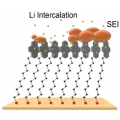
Li-ion Intercalation, Rectification, and Solid Electrolyte Interphase in Molecular Tunnel Junctions
This paper describes Li-ion intercalation into pyrenyl terminated self-assembled monolayer (SAM) on gold, inspired from graphite anode in Li-ion battery, and its effect on tunneling performance in molecular junction incorporating the SAM. A... -
Read More
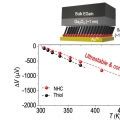
Thermopower of Molecular Junction in Harsh Thermal Environments
Molecular junctions can be miniaturized devices for heat-to-electricity conversion application, yet these operate only in mild thermal environments (less than 323 K) because thiol, the most widely used anchor moiety for chemisorption of act...


 Functionalization of Diamine-Appended MOF-Based Adsorbents by...
Functionalization of Diamine-Appended MOF-Based Adsorbents by...
 Li-ion Intercalation, Rectification, and Solid Electrolyte In...
Li-ion Intercalation, Rectification, and Solid Electrolyte In...